Date of interview: Wednesday, 1/28/2015
The last dam visited that day became the Tonoyama Dam, an arch dam owned by Kansai Electric Power Co (KEPCO). It is also known as the "Gogawa Dam". I don't remember anymore where and how we drove, but it seems that we had traveled quite a distance from the Shimanose Dam.
Gogawa Dam Observation Deck
The first place I arrived at was not the dam site but the Gogawa Dam observation deck. The official name of the dam is Tonoyama Dam, and because the name of the place is Gogawa, it is called Gogawa Dam by the local people. However, the fact that they do not deny the common name and accept the name "Gogawa Dam" is an expression of their kindness in wanting to be close to the people who live there, as well as their consideration for the local community itself.
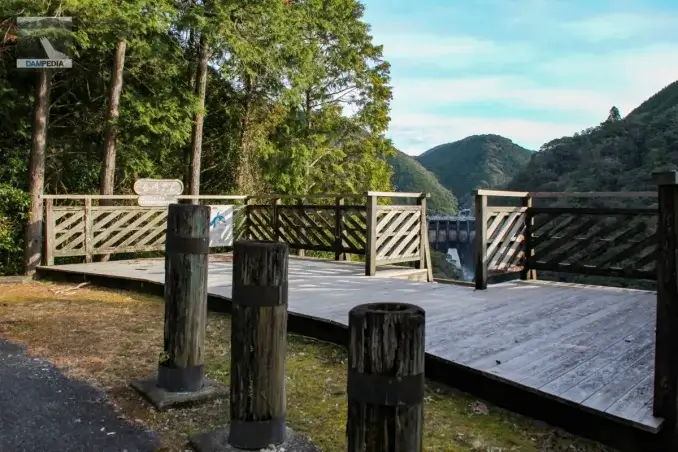
Otherwise, I don't think they would have put it on the sign. I don't know whether KEPCO or the local community is responsible for the installation of these signs, but at least that is my impression. (The sign on the right looks like it was prepared by KEPCO, while the one on the left looks like it was prepared by the local government.)
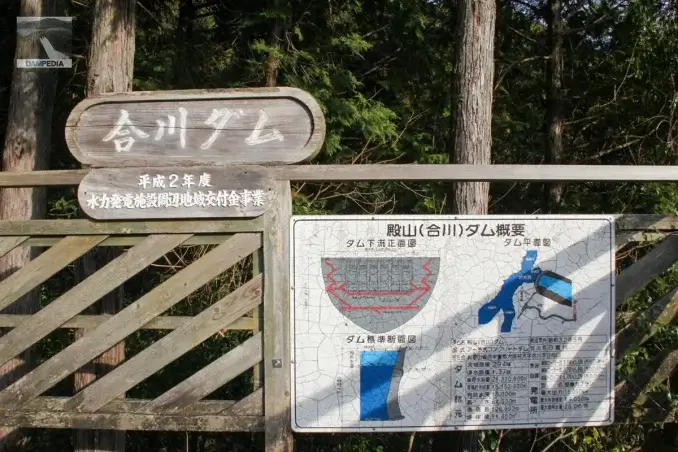
As the cross-sectional view on the overview sign indicates, the Tonoyama Dam is a domed arch dam. It is also the first domed arch dam in Japan. It is no exaggeration to say that it is the culmination of Japan's technological prowess, and is said to be the cornerstone of the Kurobe Dam construction.
The Tonoyama Dam seen from the observatory can be captured straight downstream, but the distance makes it look a little small.
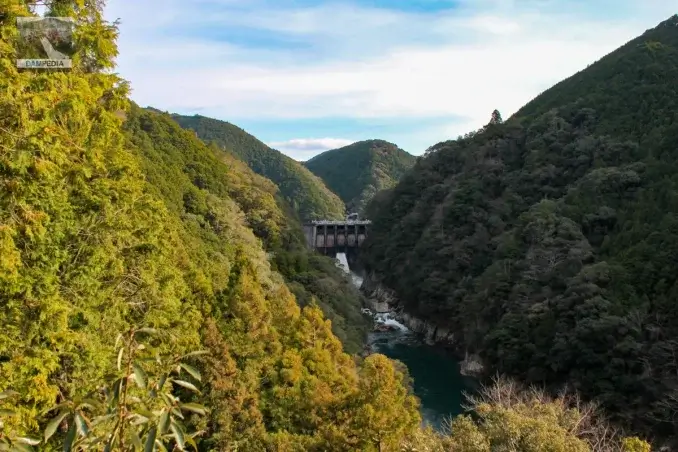
The mountains are overlapping each other, and the downstream area is just like a beautiful canyon. The Kanden black crest gate and the unique brownish embankment are very tasteful and elegant. It doesn't look much like an arch dam from here, by the way.
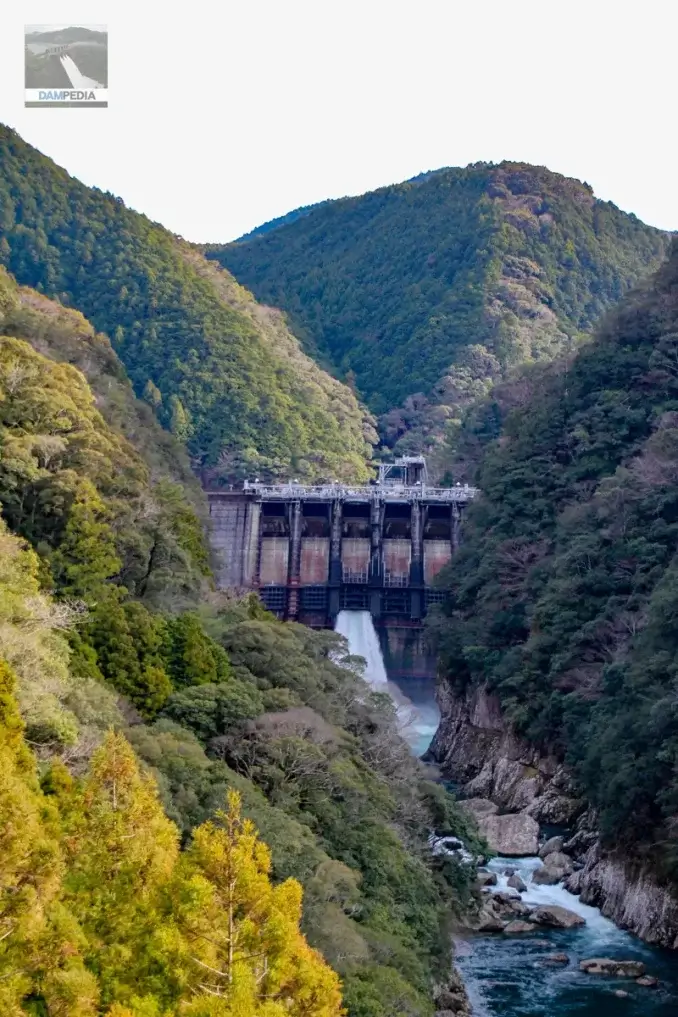
Also in the Kanden Blackorifice gateThe water that is released from it is also very beautiful. The water emanating from it is also very beautiful.
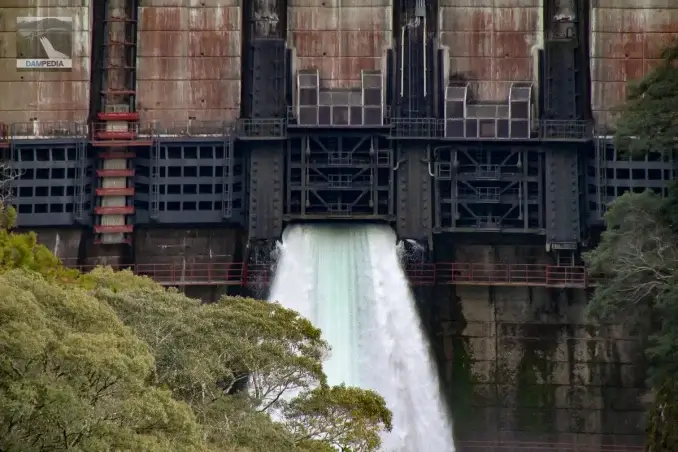
Incidentally, the Tonoyama Dam has four 7.150 x 5.670 m steel roller gates, two on each side, and two 7.756 x 5.650 m orifice gates in the center. The crest has six 6.770 x 2.279 m steel drop gates.
As the name implies, a drop gate is a gate that is lowered during discharge to allow overflow at the top of the gate. When normally closed, the gate is raised. It looks similar to a roller gate, but the normal and operating times are reversed.
The reason why a drop gate was adopted for the crest gate of the Tonoyama Dam is probably because it is an arch dam with a thin embankment and overflow section because the door body can be contained in a small space.
Dam site of Tonoyama Dam
I moved to the dam site. The dam site does not look like a dam, but just a parking lot, a building, and a crane. I wasn't sure if I could park my car in the parking lot, but since there was no other parking lot, I borrowed it for a while.
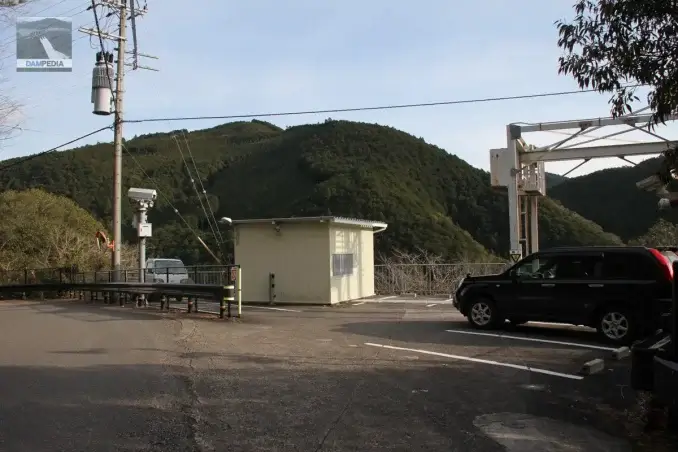
A crane for loading and unloading materials.
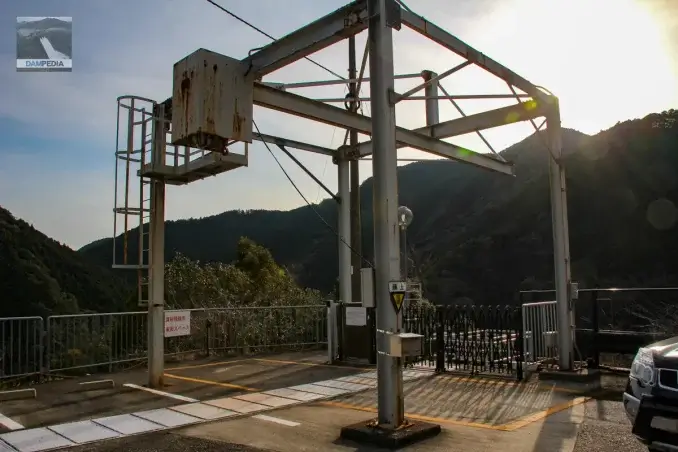
To my surprise, the Tonoyama Dam is open for tours if you make a reservation in advance. I wonder if it is not possible to visit alone...
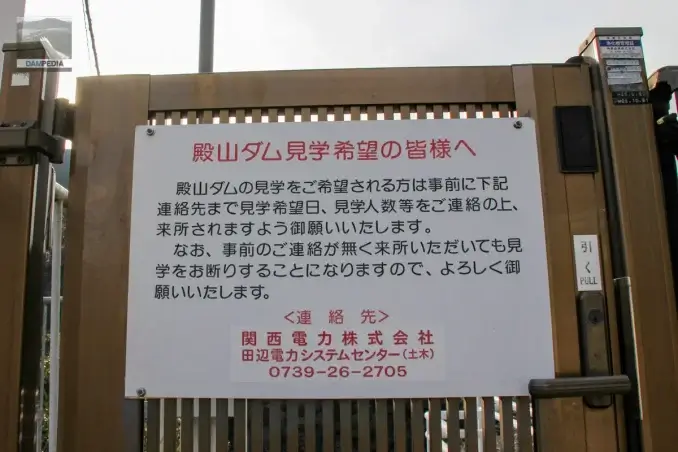
The top of the Tonoyama Dam and the dam management office are located further down from here, where an incline has been installed on a steep slope.
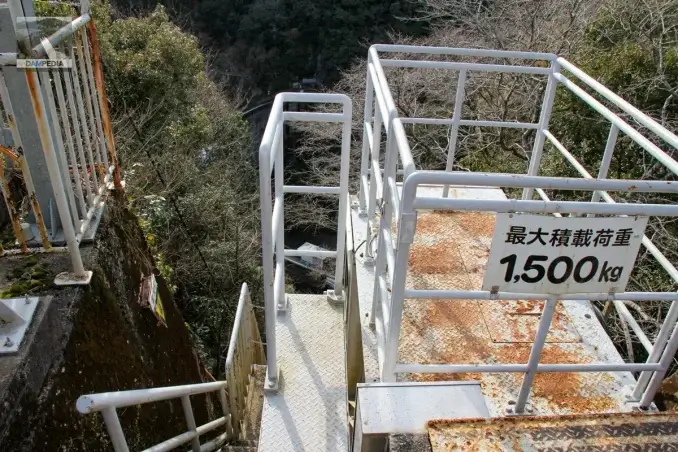
Just by looking at this, you can see that it was built on a very steep terrain.
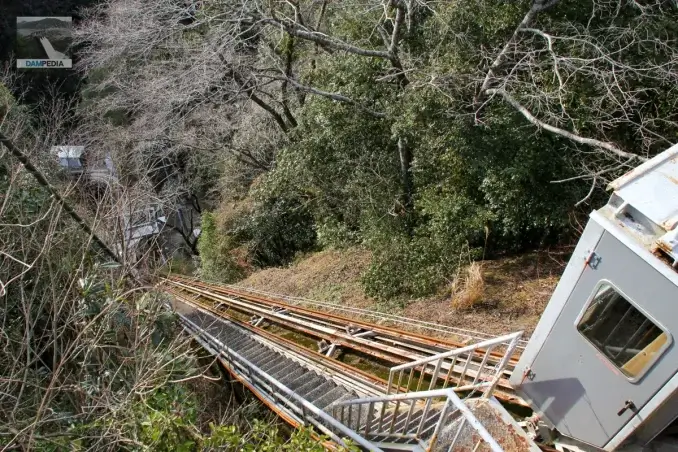
I moved to the right and left on the right bank to see if I could somehow see the embankment. However, the trees were in the way and this was the best I could do. If I have a chance, I would like to visit the embankment. I would love to see the smoked silver dam at close range...that's what the Tonoyama Dam was like.
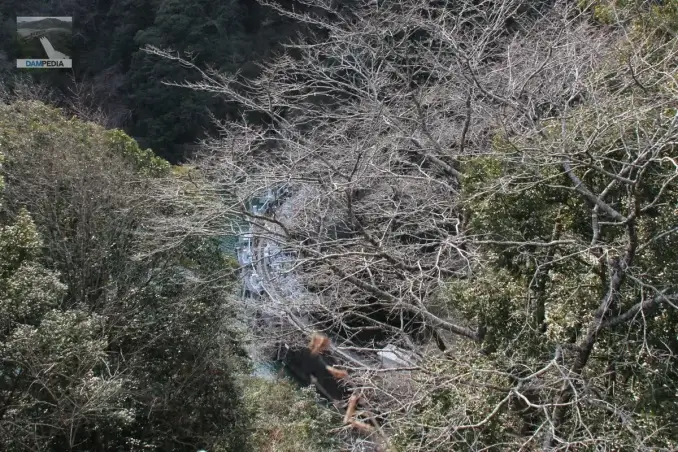
(extra) Cape Shiomisaki
Since this was my first visit to Wakayama, I wanted to see the southernmost point of Honshu, so I came to Cape Shiomisaki for the last stop of the day. Normally, you can visit the Shiomisaki Lighthouse, but since it was dusk, I only saw it from outside the gate.
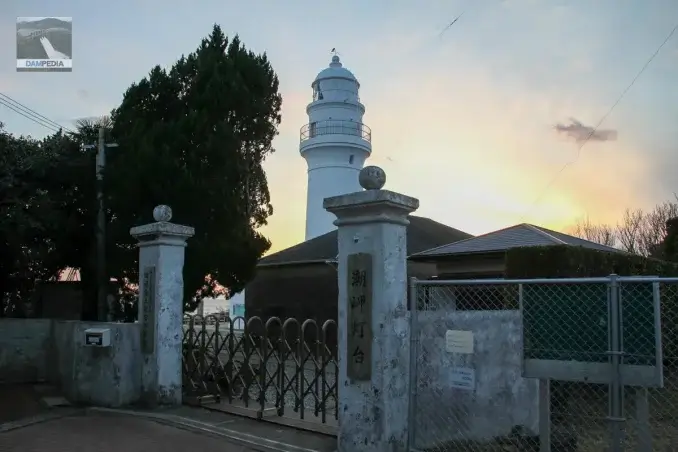
Cape Tidal Basin is enveloped in evening darkness.
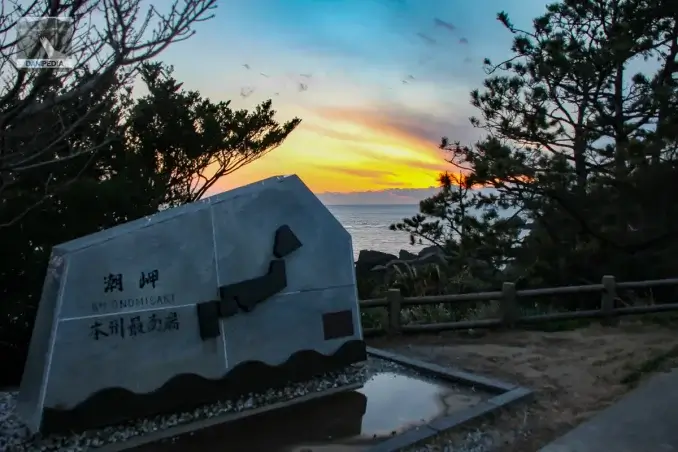
My first visit to Wakayama was very enjoyable as everything I saw was fresh and new. There are many sightseeing spots, such as the ocean, mountains, and of course, many different types of dams to enjoy to the fullest. I left Cape Shiomisaki with a vow to return to Wakayama.

Tonoyama Dam Specifications
| Location | Aza-Hinamiguchi, Aza-Agawa, Tanabe City, Wakayama Prefecture |
| River Name | Hikigawa River System Hikigawa River |
| Objective | P(Power generation) |
| Model | A(arch dam) |
| Bank height | 64.500m |
| Bank length | 128.692m |
| Dam volume | 54,100 m3 |
| Watershed Area | 294km2 |
| Reservoir area | 137 ha |
| Total storage capacity | 21,320,800 m3 |
| Effective water storage capacity | 13,152,900 m3 |
| Dam operator | Kansai Electric Power Co. |
| Main body constructor | Maeda Corporation |
| Year of launch | 1955 |
| Year Completed | 1957 |
| Name of Dam Lake | Gogawa Reservoir |
Other facilities/observations
| Parking lot | △ |
| Toilet | × |
| Park | × |
| PR Exhibition Hall | × |
| Fishing | ○ |
| Viewing platform | × |
Map around Tonoyama Dam (Gogawa Dam)
Weather around Tonoyam Dam (Gogawa Dam)
Accommodations that may be close to Tonoyama Dam (Gogawa Dam)

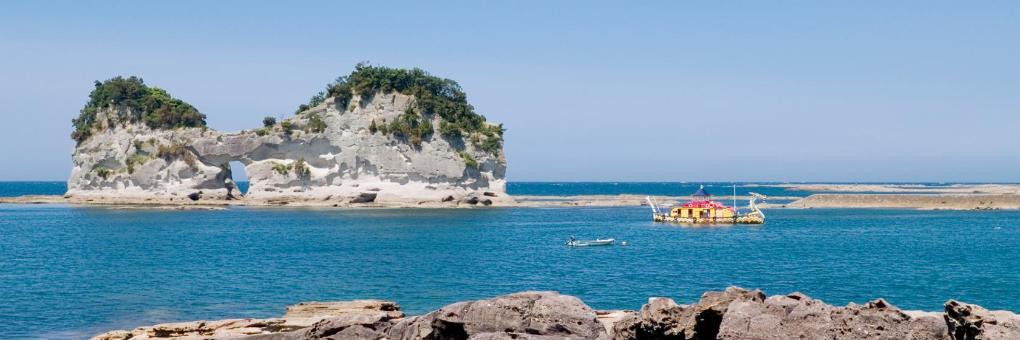

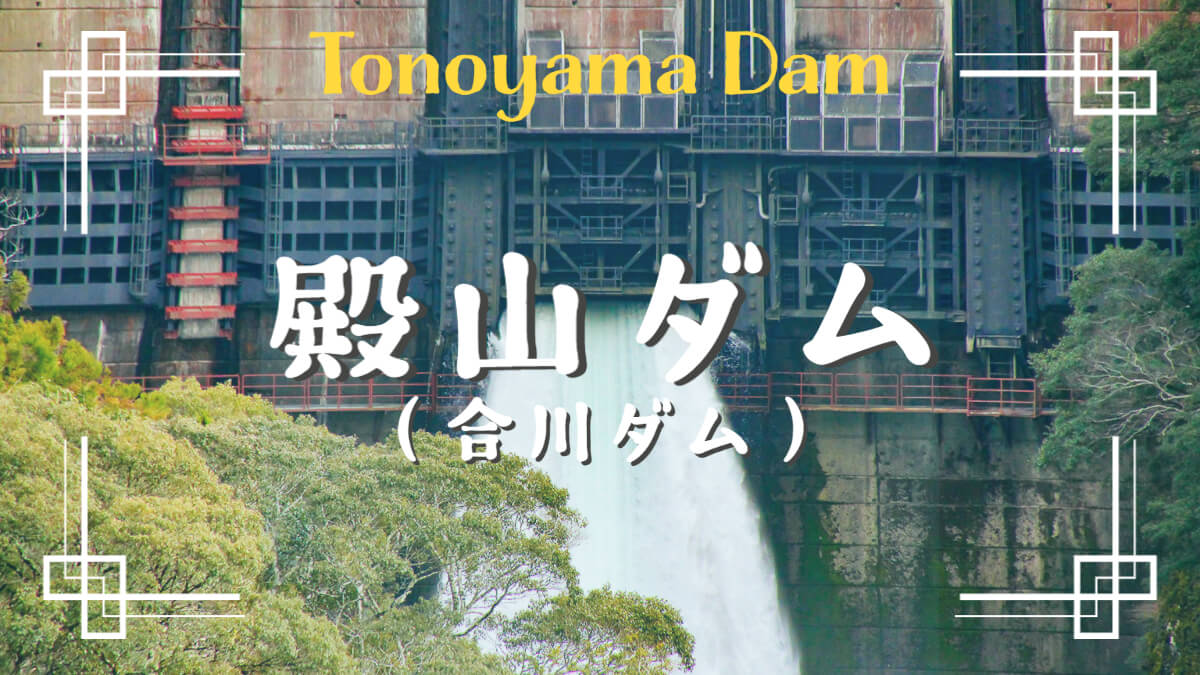

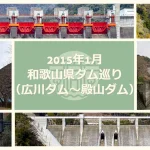
Comment